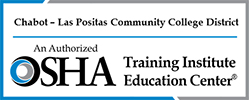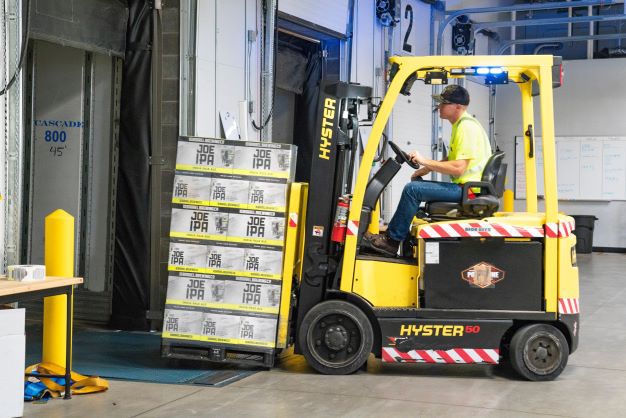By Myron Brown |
Powered industrial trucks, commonly referred to as forklifts, play a vital role in the handling of inventory and materials in most industrial and distribution operations. When forklifts are operated safely by trained personnel, they expedite the smooth and efficient loading, unloading, movement and storage of boxes, crates, pallets, and other materials. Unfortunately, all too often forklifts are used by untrained workers in an unsafe manner, resulting in needless and avoidable accidents, injuries, and death.
Powered Industrial Truck violations have consistently appeared on OSHA’s Top 10 list of most frequently cited standards year after year and in FY 2021 ranked #9 with 1420 citations. OSHA publishes its annual Top 10 list to alert employers about commonly cited standards so they can take steps to find and fix recognized hazards. OSHA remains focused not only on promoting forklift safety but also on enforcing its standards for powered industrial trucks.
Whether employers and workers lack awareness of the risks of operating and working near forklifts or are simply disregarding the risk factors, it’s clear that reducing the potential for serious accidents and injuries should be a high priority for all companies that utilize forklifts. Employers can create a successful forklift safety program by following the procedures outlined in the OSHA Standards for Powered Industrial Trucks, beginning with comprehensive training for all forklift operators. An effective safety program should also include written policies and procedures for forklift inspection and maintenance, and guidelines for safe work practices, traffic management, and general hazard awareness for all employees who work on or near forklifts.
Employers are responsible for ensuring that every employee who operates a forklift is at least 18 years old and has received comprehensive training and certification before operating a forklift. Training must be conducted by an experienced forklift operator and should include a combination of formal classroom instruction, pre-operation inspection, and practical skills evaluation. Employers must certify that trainees have successfully completed both a written test and a hands-on performance evaluation. Since certified forklift operators must be re-evaluated every 3 years, a record of each operator’s name, date of training and evaluation, and the trainer’s name should be kept on file at a minimum.
Effective forklift training should focus on general hazards that apply to the operation of all or most forklifts, hazards associated with particular types of trucks, general workplace hazards such as lighting and surface conditions, and specific hazards associated with the workplace where the vehicle is being operated. Forklift operators must be trained to take responsibility for the vehicles they drive, their loads, company property, equipment and, most importantly, their co-workers or pedestrians, who account for almost one of five fatal accidents and sustain 60% of injuries involving forklifts.
Supervisors can play a key role in enforcing safety guidelines by establishing routes for forklift operation, equipping forklifts with automatic signal alarms to alert nearby workers, and enforcing commonsense traffic rules, including:
- Keep to the right on roadways and wide aisles
- Drive at a reasonable speed depending on location and condition of surface
- Make initial eye contact between operator and pedestrian, then yield to pedestrian
- Slow down, sound your horn, and flash your lights (if available) at intersections, corners, ramps, and other danger points
- Never lift or transport co-workers with the forks
- Be alert for wet and slippery surfaces
- Don’t block traffic when parking
- Always set the parking brake, lower the forks, and neutralize the controls when dismounting from a forklift.
Employees who lack appropriate training and are unaware of the potential hazards in their work environment are much more vulnerable to injury and worse. Employers who implement an effective forklift safety program can not only reduce accidents, injuries, and liabilities, but also increase efficiency and productivity, reduce damaged materials and inventory, and operate in full compliance with OSHA standards.
Resources
Powered Industrial Trucks – Forklifts OSHA provides information and many resources on its website.
Sample Daily Checklists for Powered Industrial Trucks All forklifts should be examined at the beginning of each shift by the operator before being placed in service, and the results recorded on an inspection checklist.
eTool: Powered Industrial Trucks (Forklifts) OSHA’s eTool provides an excellent overview with illustrations.
 Myron Brown has been an instructor at the OSHA Training Institute Education Center for over 12 years and has worked in the health and safety field for over 28 years with experience in heavy civil construction, commercial construction, and manufacturing environments. Myron has also been involved in his own safety consulting business for 20 years. He has developed and provided training on a wide variety of subjects, including OSHA and Cal/OSHA standards and trainer-level courses. Click Here for a complete list of Myron’s upcoming classes.
Myron Brown has been an instructor at the OSHA Training Institute Education Center for over 12 years and has worked in the health and safety field for over 28 years with experience in heavy civil construction, commercial construction, and manufacturing environments. Myron has also been involved in his own safety consulting business for 20 years. He has developed and provided training on a wide variety of subjects, including OSHA and Cal/OSHA standards and trainer-level courses. Click Here for a complete list of Myron’s upcoming classes.

